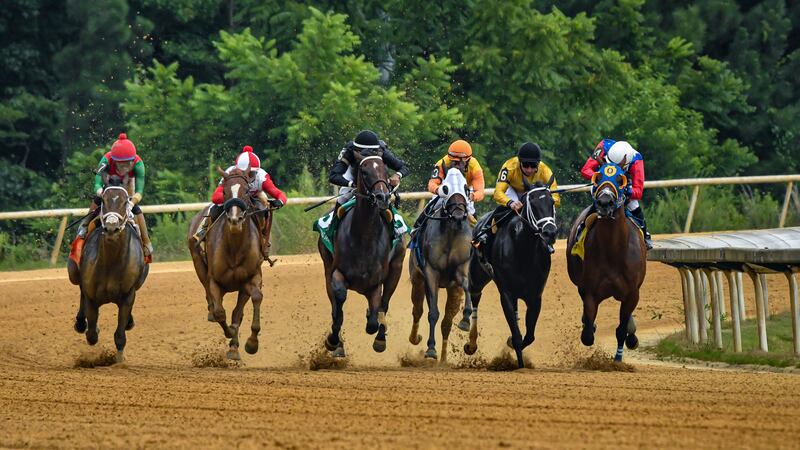How Wyoming horse racing outran extinction

CHEYENNE, Wyo. (Wyoming News Now) - In 2010, there were zero live horse races and the industry neared extinction.
This year, over 50 races premiered and record purse money was awarded.
Rome wasn’t built in one day nor could Wyoming horse racing be revived in that time. In fact, not even several years allowed enough time for the industry to rebound.
Between 2010 and 2012, only four horse races took place, race tracks were being shut down and horsemen were selling their horses. So what brought it all back?
Betting on old races.
In 2013, the passage of HB 25 Enrolled Act 46 was enacted in Wyoming, allowing wagering on historic racing. Wyoming permitted the public to bet on old races using self-service terminals at off track betting sites throughout the state.
Historic racing is a method of pari-mutuel wagering. Patrons wager on previously-run horse races through new technology that not only permits a patron to place a wager on the machines, but also to view official race results and display entertaining video or mechanical displays.
Pari-mutuel wagers mean that the racetrack, or permittee, accepting the wager has no interest in the outcome of the race. Rather, the wagered money is pooled.
The racetrack deducts a set amount from the pool to pay for horsemen’s purses and operating expenses, which include statutory regulations for the Breeders Award Program and the municipalities where the wagers took place. The balance of the pool is returned to patrons who place winning wagers.
“The revenue from historic racing terminals that is put back directly into live racing is the only reason the Wyoming horse racing industry survived,” Brande Koltiska, WY Bred Program Administrator for the Wyoming Gaming Commission, said.
In order to own and operate these terminals, racetracks have to run a minimum of 16 live race days in Wyoming per year.
This year, a whopping 52 live races were run in three different tracks across Wyoming.
“Historic racing was the miracle that Wyoming needed,” Koltiska said.
In 2022, over $5.1 million was awarded to owners, breeders and stallion owners who participated in the Wyoming Breeders Awards Program.
In 2023, that number is expected to surpass $6 million.
Local municipalities profit too. Over $12.8 million was bagged in 2022 and an even higher projection is expected for 2023.
Koltiska reiterated that the benefits of horse racing reach beyond the horse track. She touted the economic stability it provides, the jobs it creates and the tourism it draws. Even Wyoming agriculture sees a positive impact.
The apex of Wyoming’s horse racing rise perhaps came in August when Wyoming Downs hosted their richest race on record when $200,400 was available for the taking. When the dust cleared on the day, one horse even earned his team over $92,000.
“Not sure anyone could have dreamed of a better outcome for the racing industry in Wyoming,” Koltiska said.
Copyright 2023 KGWN. All rights reserved.








